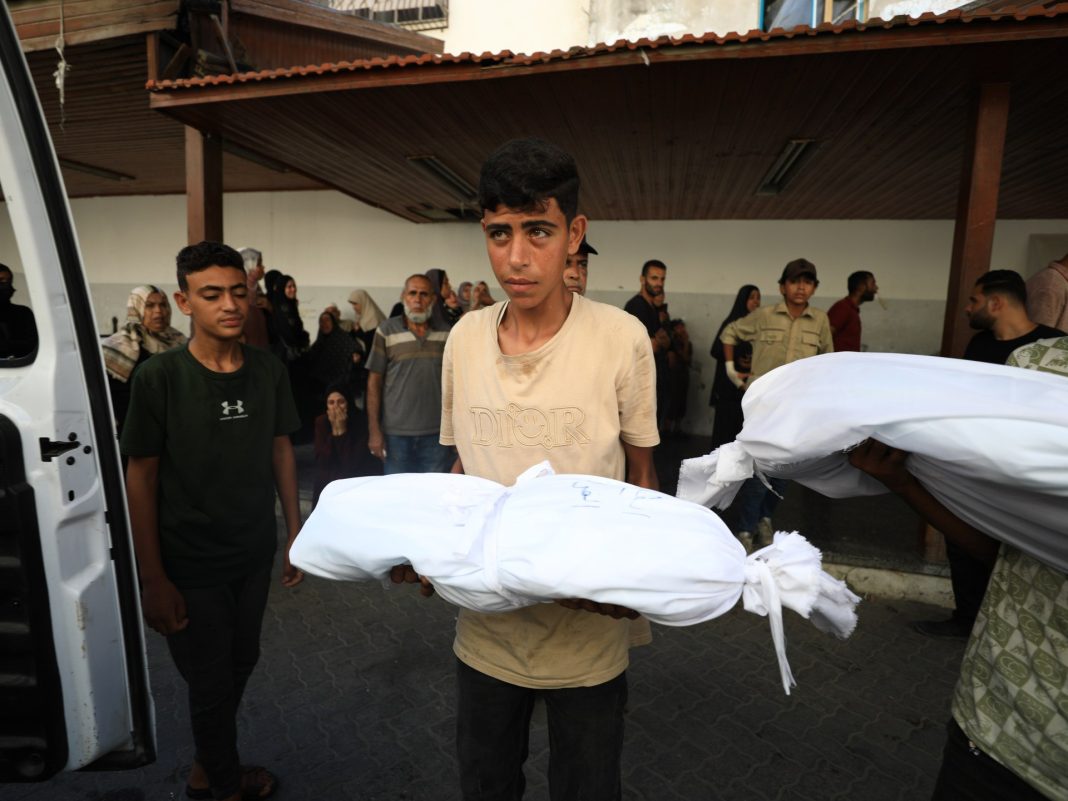The source, who is informed on the latest round of indirect talks, told MEE that a number of factors had led to the breakthrough, adding that last month’s ceasefire in Lebanon provided a blueprint for a similar ceasefire in Gaza.
Israel and its primary backer, the United States, have faced renewed criticism over the war on Gaza, where more than 45,000 people have since been killed, most of the population has been driven from their homes multiple times and hundreds of thousands are at risk of famine.
Meanwhile, the captives’ families have increased their criticism of Israeli Prime Minister Benjamin Netanyahu for the lack of progress in releasing their loved ones.
“The Israeli operation did not achieve its goals [in Lebanon] and they opted for a ceasefire,” the Palestinian source said, adding that the Israeli government was now looking to do the same in Gaza.
The source’s comments came as several Israeli media outlets reported that a ceasefire deal could be completed as early as Hanukkah, which coincides this year with 25 December.
Public support has largely shifted in favour of a ceasefire deal with a majority of Israelis saying they support an end to the war for the release of all captives.
The Palestinian source said that Donald Trump’s resounding election victory last month last month had released a new life into the talks that had collapsed several months ago, and there was renewed optimism that he would seek to end wars overseas.
“Trump presents himself as a leader. When he orders, people listen. Therefore, there is a new dynamic that could allow for a ceasefire.
“But this is not guaranteed because of Netanyahu’s unwillingness to stop this war,” the source stated.
As the conflict has dragged on, Netanyahu has persistently been accused of prioritising his precarious political position over a ceasefire deal and end to the war.
Some of his fiercest critics have accused him of maintaining a war footing to prevent elections from being held and the possible resumption of criminal proceedings for graft and other allegations against him.
Of the 251 people who were taken captive after the 7 October attacks, more than 100 were released in the first prisoner and hostage exchange in November 2023, whilst only eight have been freed in Israeli military operations since then.
The Palestinian source told MEE that another obstacle in the on-off negotiations was Israel walking away from a commitment to release over 100 named prisoners held in Israeli prisoners.
Israel had initially signalled acceptance of a list of about 100 big names of prisoners it would release. They would include some of the top leaders of resistance groups of all Palestinian factions, including Fatah, notably Marwan Barghouti.
Since July it has taken that off the table and at one point insisted it alone would decide the names to be released.
That has now changed, but nothing is certain, the source said.
Meanwhile, the source denied reports in US and Israeli media that Hamas had conceded on its red lines, namely that there should be a permanent ceasefire, that there should be a full withdrawal of Israeli troops and that all people should be allowed to return to their homes.
The source said that Hamas had shown “realism and flexibility” on the implementation of ceasefire conditions it had agreed to in July this year, a document which at the time had the backing of US President Joe Biden, CIA chief Bill Burns and Egyptian and Qatari mediators.
Referring to these red lines, the source noted: “These demands are on the table, and negotiations are carrying on with those conditions.
“The negotiations are about finding ways in which they can be implemented.”
Last week, the Wall Street Journal reported that the two sides were considering a 60-day ceasefire in which up to 30 captives, including US citizens, would be released.
In turn, Israel would release Palestinian prisoners and allow larger amounts of humanitarian aid into Gaza.
The Journal added that Hamas had submitted a list of captives including US nationals, women, those with medical conditions and the names of five dead Israelis.
It was the first time a list of captives had been handed over since the temporary truce in November.
According to Arab mediators, who spoke with the Journal on condition of anonymity, Israeli troops would remain in Gaza during the truce on what would be a temporary basis.
The source also told MEE that as of yet, Palestinian Authority (PA) President Mahmoud Abbas had yet to accept a plan that would see the establishment of a technocratic government that would govern Gaza after the end of the war.
The source said Hamas had held a number of meetings with Fatah officials in Cairo and other places, and had agreed that the best outcome would be a coalition government for the West Bank and Gaza.
“This was agreed by all factions, but Abu Mazen [Abbas] rejected it. So another option was discussed to create a local administration in Gaza formed by locals that both Hamas and Fatah agreed on. The Egyptians presented a paper and the negotiations were positive and detailed,” the source added.
“It looks positive but Abu Mazen [Abbas] needs to agree on it. But it seems he will not. Abu Mazen [Abbas] seems to have guarantees that he will be presented to Trump and he is prioritising his meeting with Trump over the needs of his own people.”
